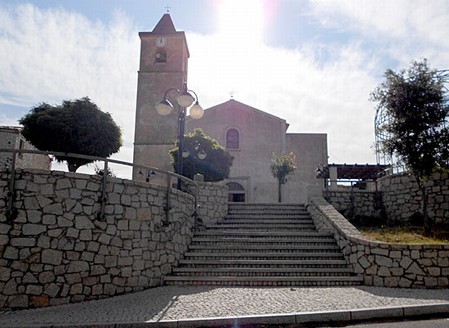At the foot of Mt. Gonare, in the heart of the Barbagia di Ollolai, the territory that is home to Sarule is characterized by a strong elevation range, ranging from 215 meters in the Ghirthoe Valley to 1,086 meters at Mt. Gonare.
The numerous archaeological traces testify to a very ancient past: the settlements of Incavadu, Neunele, and Valeri attest to the frequentation of the place as early as prehistoric times, as do the tomb of giants of S’Altare de Logula and the numerous towers of the Nuragic age, represented in particular by the nuraghi Iloe, Badu ‘e Orane, and Illudei.
In medieval times the village belonged to the giudicato of Logudoru and was chief town of a curatoria; in
later, under Aragonese rule, it was incorporated into the marquisate of Orani.
Sarule’s artistic and architectural heritage is represented above all by its churches: in the town center are the early 13th-century church of Our Lady of the Rosary; the small church of Santa Croce, dating from the 1600s; the parish church of St. Michael Archangel, 18th-century but opened for worship only in 1814; and the church dedicated to St. Anthony of Padua, which houses a fine altarpiece by Sarule painter De Gonare.
But it is certainly the sanctuary of Nostra Signora di Gonare that attracts thousands of believers and visitors to
Sarule: in fact, every year there is one of the most important and participated pilgrimages on foot in Sardinia, culminating in the great feast, sa festa manna, on September 8, full of events and demonstrations.
In a dominant position on a limestone outcrop, from which there is a view of Mount Ortobene over Nuoro, Corrasi above Oliena and Gennargentu in the background, the shrine was built by Judge Gonario II of Torres in 1147 to fulfill a vow made during a shipwreck, but what we see today is the result of a major reconstruction carried out in the 1600s.
Sarule’s fame is strongly linked to textile craftsmanship with the production of the famous rugs, sas burras, handmade in vertical looms with raw wool yarns from Sardinian sheep, recognizable
by their bright colors, striped patterns and stylized figures.
The “Eugenio Tavolara” Museum of Textile Art tells the story of Sarulese carpet and exhibits notable specimens from the 1700s onward, as well as a fine variety of saddlebags and traditional costumes.
The country’s economy is divided between industry and the service sector, although the agro-pastoral sector remains prevalent.
Notable among the typical products are cheeses, olive oil and wine, the latter in
small quantities but using methods that guarantee excellent quality.
From the cheeses, renowned for their authenticity, tasty typical desserts are made, such as sas casadinas and sas savadas.


